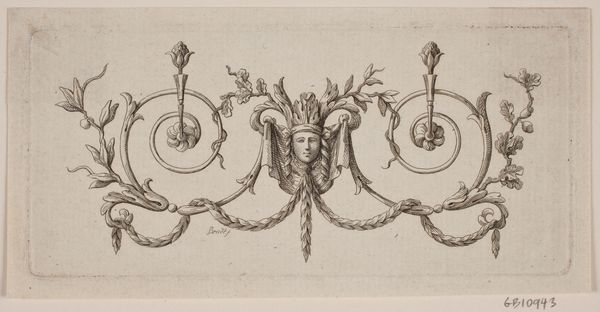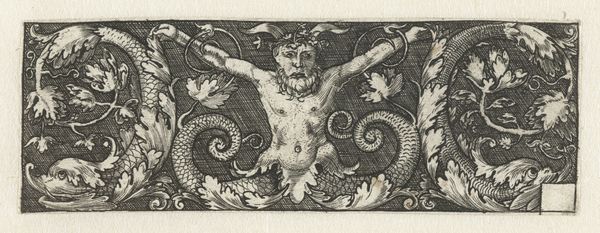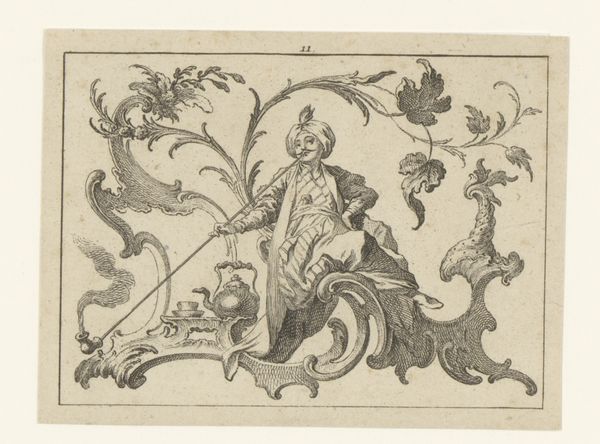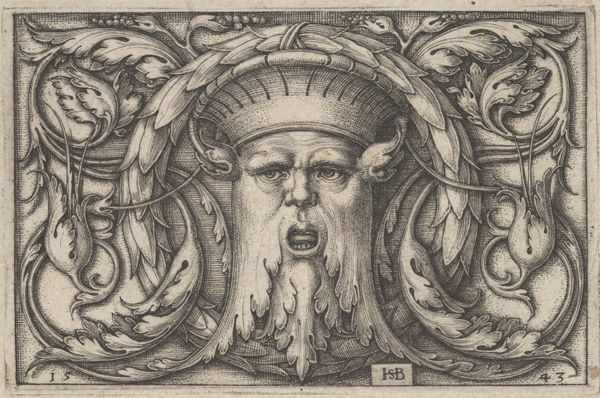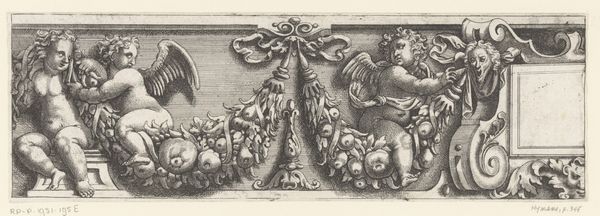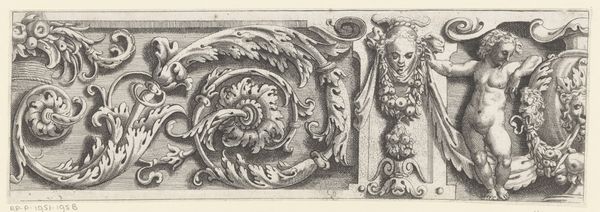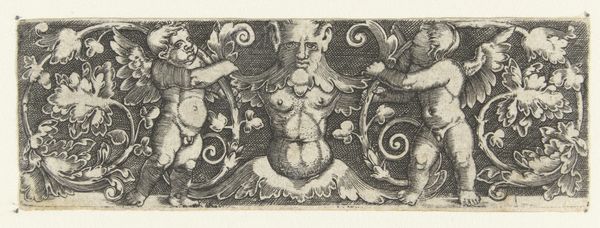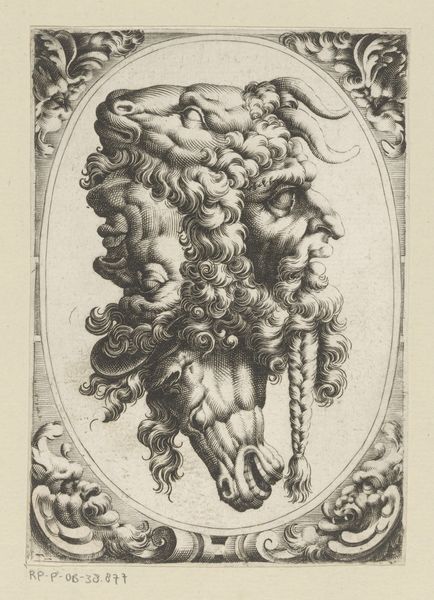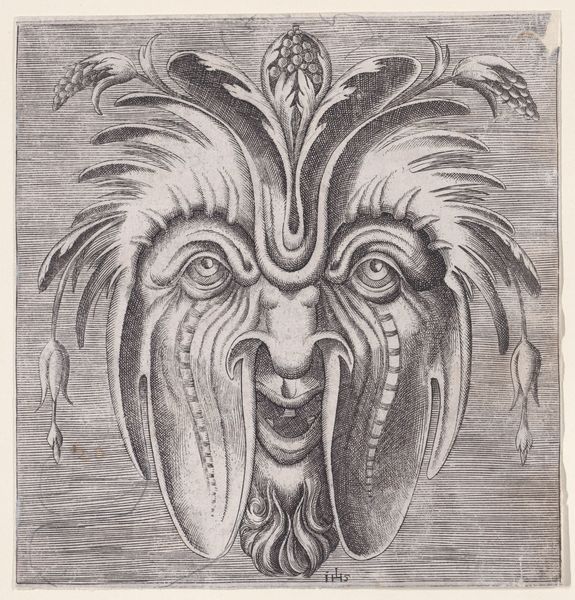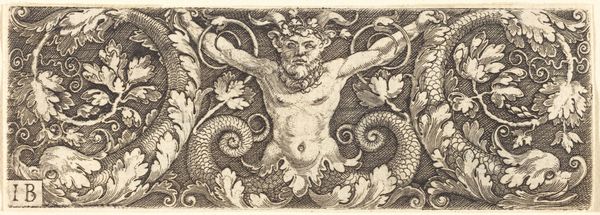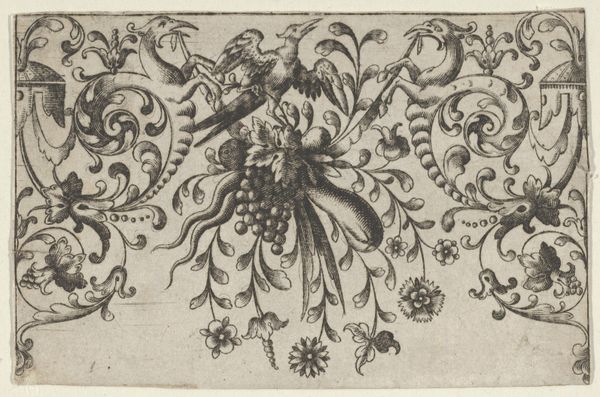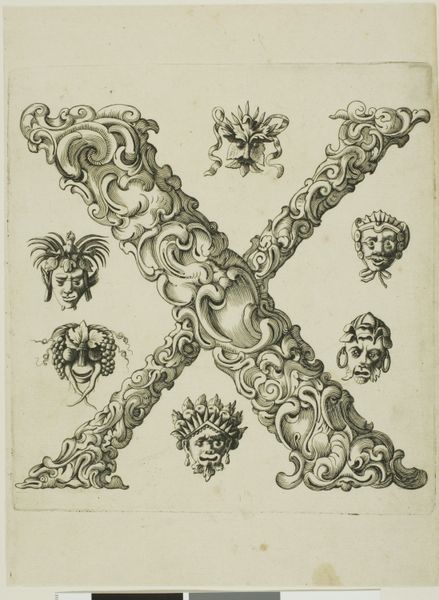
print, fumage, engraving
#
allegory
#
baroque
# print
#
old engraving style
#
fumage
#
figuration
#
history-painting
#
engraving
Dimensions: height 45 mm, width 79 mm
Copyright: Rijks Museum: Open Domain
Editor: This engraving from between 1683 and 1783, "Medusa's Head and Two Burning Torches," currently residing in the Rijksmuseum, feels incredibly dynamic. The lines seem almost frenzied. What are your initial thoughts when you look at this piece? Curator: My focus immediately shifts to the engraving process. The meticulous labor involved in creating those intricate lines to depict Medusa and the surrounding elements! It speaks volumes about the social and economic context that valued such artisanal skill. Note, too, the readily available materials for the engraver. Editor: So, you’re looking beyond the surface-level image, right? More at what it took to make it. Curator: Precisely. And even beyond that, who was consuming these images? Was this for the elite, a readily-accessible form of imagery and storytelling for the common person, or perhaps even a subversive visual circulated through less-than-legitimate channels? Understanding the audience helps unlock further layers of meaning. Notice that although the depiction refers to Classical Antiquity, the graphic rendering speaks to distinct Baroque tastes and aesthetic demands. What type of workshop did it come from? What were they trying to express to their customer base? Editor: I hadn’t considered it from that perspective. Now I’m wondering about the engraver – were they just replicating someone else’s design, or were they actively interpreting the myth of Medusa through the material process? Curator: Exactly! By interrogating the ‘how’ and ‘why’ of its making, we’re no longer simply admiring an image, but unpacking a complex web of artistic labour, material conditions, and potential social messaging. What sort of knowledge production and division of labor led to this image's proliferation in society? Editor: This has given me a whole new appreciation for engravings. It’s more than just the final image, it’s about understanding the process and the social forces behind it. Curator: Indeed. Considering the conditions of production allows us to engage critically with art beyond mere aesthetic appreciation.
Comments
No comments
Be the first to comment and join the conversation on the ultimate creative platform.

